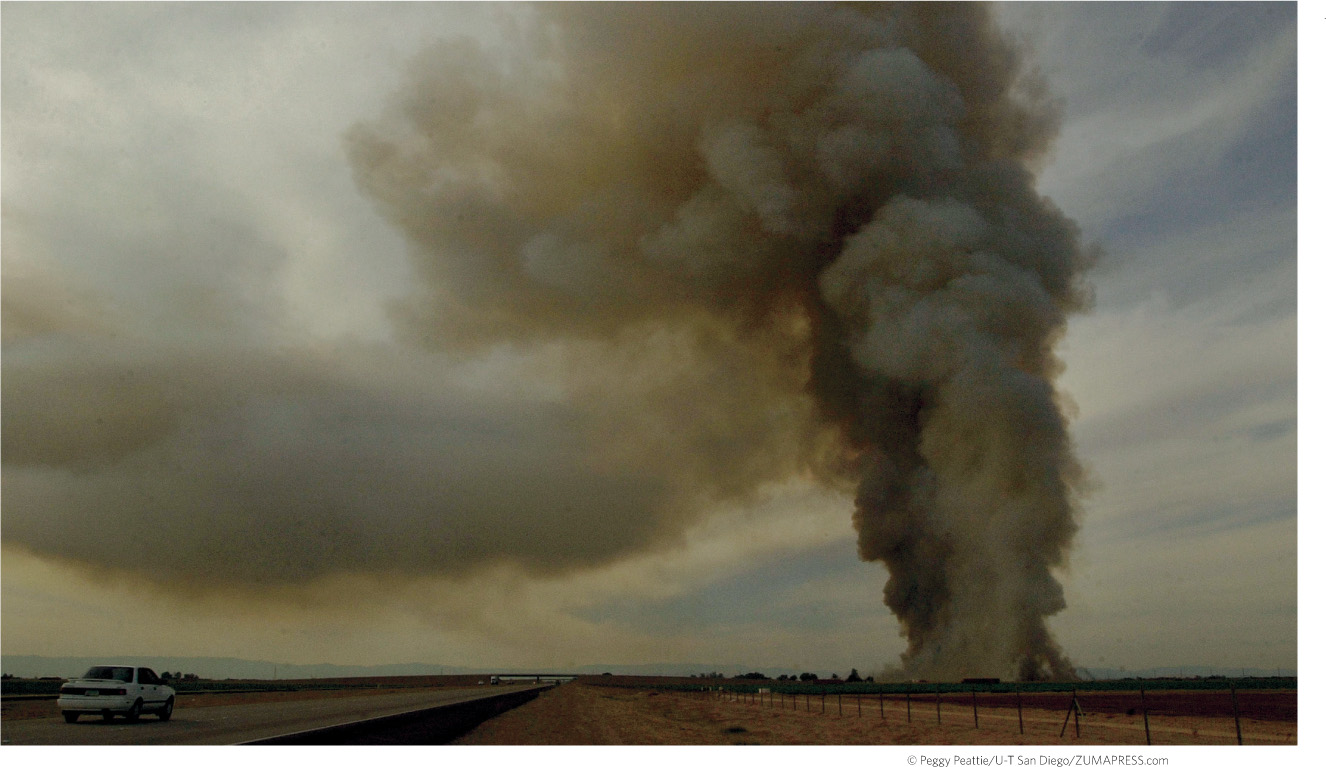There are many different types of outdoor air pollution.
In many urban areas and in developed nations today, much of the air pollution comes from vehicle exhaust and industry emissions, including emissions from coal-fired power plants.
While less-developed nations do have outdoor pollution, their biggest problem is often indoor air pollution from small particles released through burning solid fuels such as charcoal, wood, or animal waste. However, only in the past 25 years have scientists really been able to tease out the link between air pollution and asthma.
KEY CONCEPT 20.2
Air pollution is caused by natural and anthropogenic sources and includes emissions that are directly harmful (primary pollutants) and those that are converted to harmful forms (secondary pollutants).
Outdoor air pollution includes chemicals and small particles in the atmosphere that can be either natural in origin—arising from natural events like sandstorms, volcanic eruptions, or wildfires—or come from humans—such as pollution released from factories and vehicles during the combustion of fossil fuels or from burning any biomass such as wood, crop waste, or garbage. Of these anthropogenic sources, primary air pollutants are pollutants released directly from both mobile sources (such as cars) and stationary sources (such as industrial plants). In addition, some primary air pollutants react with one another or with other chemicals in the air to form secondary air pollutants. For example, ground-level ozone forms when nitrogen oxides (NO and NO2—together expressed as NOx) released during fossil fuel combustion react with atmospheric oxygen in the presence of sunlight. Smog—a term that’s a combination of the words smoke and fog—is hazy air pollution that contains a variety of primary and secondary pollutants.
primary air pollutants
Air pollutants released directly from both mobile sources (such as cars) and stationary sources (such as industrial and power plants).
secondary air pollutants
Air pollutants formed when primary air pollutants react with one another or with other chemicals in the air.
ground-level ozone
A secondary pollutant that forms when some of the pollutants released during fossil fuel combustion react with atmospheric oxygen in the presence of sunlight.
smog
Hazy air pollution that contains a variety of pollutants, including sulfur dioxide, nitrogen oxides, tropospheric ozone, and particulates.
385

Pollution can also move from the troposphere (closest to Earth) up into the stratosphere, a much thinner layer of the atmosphere that extends from 11 to 50 kilometers (7 to 31 miles) above Earth. This region contains the “ozone layer,” an area with high ozone (O3) concentrations. As we saw in Chapter 2, ozone in the stratosphere is significant because it serves as Earth’s sunscreen, blocking some of the dangerous ultraviolet (UV) radiation from the Sun. Air pollution can have grave impacts on this layer; for instance, chlorofluorocarbons (CFCs)—compounds that contain carbon, chlorine, and fluorine—can travel up into the stratosphere and destroy ozone.
Don’t confuse ground-level ozone pollution with stratospheric ozone depletion. These are two very different problems, though they deal with the same molecule—O3. Ozone in the stratosphere is a good thing, but ozone at ground level is a problem—you don’t want to breathe it in as it can directly damage the sensitive tissue of the lungs. Even plants are damaged by the corrosive action of ozone.
386